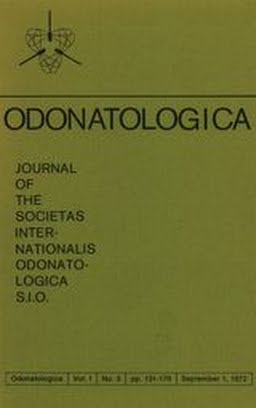1972
Action de la température sur la diapause embryonnaire et sur le type de développement d’Aeshna mixta Latreille (Anisoptera: Aeshnidae)
Publication
Publication
Odonatologica , Volume 1 - Issue 3 p. 143- 153
The life history of Aeshna mixta seems to be subject to thermal conditions acting during the embryonic stage. Three aspects should be considered. 1. – Completion of embryonic diapause. An exposure of the eggs at 10°C for 10 to 15 weeks before return to 20°C must be considered as the thermal optimum for performing the diapause development. 2. — Synchronization of hatching. The minimal period of exposure to low temperatures is 15 weeks. After that time 94% of eggs hatch within 5 days. 3. – Number of larval instars. The post-embryonic development may involve 9, 10 or 11 larval Instars, each of these development types being determined ab ovo. A relatively short embryogenesis (100 days) induces hatching of larvae which develop within a rather short time (2/3 of type 9, 1/3 of type 10), whereas an about two times longer embryogenesis causes the hatching of larvae which develop slowly with a higher number of instars (4/5 of type 10,1/5 of type 11).
| Additional Metadata | |
|---|---|
| Odonatologica | |
| CC BY-SA 4.0 NL ("Naamsvermelding-GelijkDelen") | |
| Organisation | Societas Internationalis Odonatologica |
|
F. Schaller. (1972). Action de la température sur la diapause embryonnaire et sur le type de développement d’Aeshna mixta Latreille (Anisoptera: Aeshnidae). Odonatologica, 1(3), 143–153. |
|
